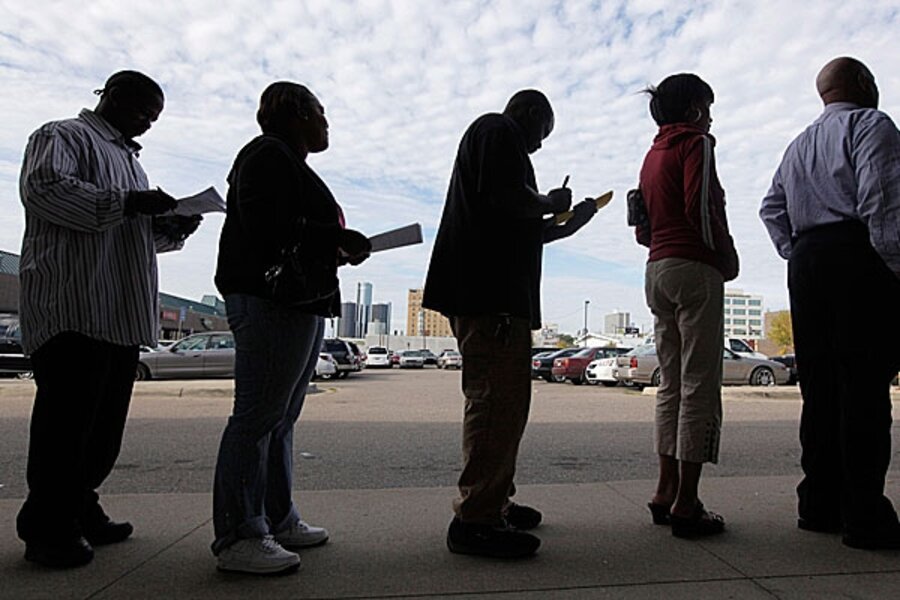US job losses worse than expected, unemployment now 9.8 percent
Loading...
| New York
In a disappointing report, termed a “wake-up call” for the economy by some commentators, the Labor Department reports employers last month continued to shed jobs at a higher pace than expected.
In September, the Labor Department reported Friday that the economy lost a net total of 263,000 jobs, up from a downwardly revised 201,000 in August. Wall Street had been expecting a loss of 180,000 jobs, according to a survey by Thomson Reuters. The unemployment rate inched up to 9.8 percent from 9.7 percent.
“I don’t think it throws off the track of recovery, but it does suggest a lot of serious headwinds at this point,” says Scott Brown, chief economist at Raymond James & Associates in St. Petersburg, Fla.
Although almost every sector in the economy showed job losses, Mr. Brown says it was surprising that the government lost jobs at a time when it normally is hiring for the school year. Government employment fell by 53,000 jobs.
According to a tally by IHS Global Insight, an economic consulting firm, state and local governments have now lost 160,000 jobs over the past four months. IHS notes that this month, 29,000 of those losses came in state and local education.
“It looks like the state budget strains are offsetting the gains from the stimulus,” says Mr. Brown.
In fact, the bulk of the stimulus funds has yet to be spent. As of last week, the US had spent 21 percent of the combined tax benefits and spending increases, says Richard DeKaser of Woodley Park Research in Washington. Much of the rest “will be coming in 2010.”
Although the unemployment rate rose, it could have been much worse since an increasing number of people are dropping out of the workforce, says Brown. According to the Bureau of Labor Statistics, civilian labor force participation rate declined by 0.3 percent in September to 65.2 percent.
The number of workers who are considered “marginally attached” to the workforce rose to 2.2 million, up from 615,000 a year earlier. These are people who are not considered to be in the labor force and were not available for work or had not looked for work in the past year.
Adding the marginally attached workforce to those who are unemployed but still actively looking for work, plus those who can’t find full-time work, gives the nation an unemployment rate of 17 percent, according the National Employment Law Project (NELP).
Since the start of the recession in December 2007, the number of unemployed Americans has hit 15.1 million, up 7.6 million. The number of long-term unemployed – those out of work for 27 weeks or more – is rising at three times the rate of people finding work, reports a recent NELP study.
“One thing contributing to the higher duration of unemployment is the lack of jobs,” says Christine Riordan, a policy analyst in New York for NELP. “There are six unemployed for every one [job] opening as of July.”
If there is any silver lining to the jobs picture, on Thursday, the outplacement firm Challenger Gray & Christmas reported the number of announced layoffs in September fell to its lowest level of the year. This indicates the jobs numbers may not get worse in the months ahead.





